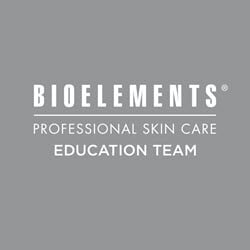
Hyperpigmentation removal: What you need to know
Do you suffer from sun spots, discoloration or dark acne scars? You’re not alone. Dark spots and discoloration, otherwise known as hyperpigmentation, are one of the most common skin concerns in the United States, especially if you have a darker skin tone. Keep reading to learn about hyperpigmentation removal now.
Hyperpigmentation: Types and causes
From tans to acne, skin keeps a visible record of the trauma it faces, which often shows up in the form of hyperpigmentation. While it might not show up for days or even years afterward, the hyperpigmentation you see on your clients now is the result of one of three triggers that causes the excess production of melanin:
1) Hyperpigmentation Trigger: UV Exposure
UV rays (whether via the sun or trips to the tanning bed) results in a tan – which is a response to injury in the skin. High exposure over time will produce unevenly distributed patches of melanin, often called “age spots.”
2) Hyperpigmentation Trigger: Hormonal Imbalance
Hormonal birth control, hormone replacement therapy, and pregnancy can cause a surge of hormones that cause uneven melanin production, leading to what’s called melasma – or “the mask of pregnancy.” Exposure to UV radiation can make it more pronounced.
3) Hyperpigmentation Trigger: Injury
Often called Post-Inflammatory Hyperpigmentation (or PIH), waxing, acne, insect bites, and razor bumps can cause excess pigmentation at the site of irritation. UV exposure can make it appear even darker. PIH occurs in roughly 65% of African Americans (1).
The hyperpigmentation removal plan
1) Exfoliate
Exfoliation is necessary for all skin types for a variety of skin concerns including hyperpigmentation. It is a key step in the hyperpigmentation treatment plan as it speeds up cell turnover to remove hyperpigmented cells faster. Exfoliation also removes the upper “crust” of skin so active lightening and brightening products can better penetrate the skin.
“Skin Editor is my absolute favorite exfoliator to recommend to clients for hyperpigmentation. This imperfection-editing leave on AHA peel creme uses a blend of glycolic and lactic acid along with kombucha in-fused organic shea butter to rapidly brighten dark damage and instantly improve clarity and color.” –Teresa Stenzel, Bioelements Director of Education
2) Lighten and brighten
Your best and safest bet to curing hyperpigmentation is to encourage clients to use LightPlex GigaWatt Dark Spot Corrector and/or LightPlex MegaWatt Skin Brightener. Both use a breakthrough brightening blend that brightens only the pigmented areas without lightening the surrounding skin. Neither includes hydroquinone like other hyperpigmentation products, making them safer for the skin.
In a consumer perception study, 99% of women thought that LightPlex GigaWatt Dark Spot Corrector helped to correct uneven skin tone, sun damage, and discoloration, while 100% of women believed LightPlex MegaWatt Skin Brightener increased luminosity and brightened overall skin tone after 28 days (2).
Not only are they effective, they’re also lightning-fast! Your clients can see results in as little as 2 weeks and the results just get better with use.
Photography: Courtesy of Shutterstock




